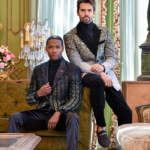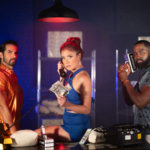Let’s say that creative photomontage is art. Mixing skills for drawing with photography and influenced by cinema, comics, medieval fantasy, and science fiction, you can find your own style of photomontage and image manipulation, especially based on the portrait and headshot photography in Los Angeles, uniting reality and dreams.
What is the origin of those ideas?
If you like photography, and you are also creative, do not hesitate to continue reading, because today we bring you the keys to reach the final photograph. You are ready?

Look for your inspiration
Muses don’t always come to your aid so you should seek inspiration on your own. Here are the tips that you should follow and the inspiration, almost, that will come along. Keep reading!
1. The creative space
Your creative space should be your happy place. A place where you can stay for hours, feel free and let your imagination run wild, without interruptions of any kind. Since, just like when you try to read or study, in order to create your image as pet photographers in Los Angeles for example, you need concentration and absolute dedication.
2. Surround yourself with what you like
In your workplace, you should always have an area full of resources close at hand to turn to when you feel uninspired. That is why it is so important to collect items that you like a lot and that stimulate you visually and mentally. It will be your motivating place in moments of the creative downturn.
3. Find your references
Researching what you like is a good way to see where ideas and styles come from, not only are you looking at the images and that’s it, your thing is to find out who created them, why those artists did what they did and what led to it, why you follow them and find out who they have been followers of.
4. Inspiration vs. Motivation
Motivation is what drives a person to act or do something. While inspiration is a stimulus, a sudden lucidity that a person feels and that favors creativity, the search for solutions to a problem, the conception of ideas that allow undertaking a project, etc. Especially related to what the artist feels and what drives the creation of works of art or product photography in Los Angeles.
Do not forget that all we try to do is create a state of personal satisfaction that motivates us to get going and avoid procrastination at all costs. Investigate a little inside and in your day to day, try to find what makes you move more. And that you feel comfortable with yourself and with your environment.

5. Never do anything for the first time
Obviously, there is always a first time for everything, but the key is to be that person that the moment they tell you “Have you ever done this?”, You can say yes. Filling yourself with experiences is essential, so you should try new things regularly.
6. The importance of being bored
Although it is okay to do new things, remember to have a few moments of healthy monotony. Your mind also refreshes in those moments and, sometimes, that little reset gives you an unexpected new idea.
7. Bring a notebook
Writing down everything and maintaining this habit over time is a good way to take advantage of the seasons of the abundance of ideas since it will not always be like that, especially if you maintain creative projects regularly and for a long time.
The Necessary Equipment
When it comes to equipment, you don’t need expensive flashes or fancy accessories. A basic camera setup, lens, tripod, and inexpensive lamp are the must-haves to get started. Let’s look at some details regarding these pieces.
- Tripod. It will help if its central column is removable to be able to place it upside down and shoot close to the ground much more comfortably.
- Reflectors and diffusers. You can get a reflector without much expense by buying a sheet of aluminum foil. Use a black card to absorb light and create shadows, and white sheets of A4 paper to act as diffusers, preventing the appearance of reflection points created by the lights.
- Desk lamps. Buy inexpensive ones – no more than two or three. With the right bulb, they can be a very functional lighting kit.

Train your creativity
Creativity can be exercised. You just have to follow these guidelines to train it and we assure you that the creation process will be much easier.
1. Copy is necessary
Do not be afraid to take many references with each new creation, always honor all the authors, dare to mix and you will find the magic.
2. Reverse engineering
Observe the ‘before and after’ of a photograph, compare the images, and try to decipher its mysteries, as if you were playing to find the 7 differences.

3. The meaning of things
Everything you create must have a meaning. And if it is nonsense, it must also have a reason for its absurdity. That is when making a composition with different images it is very easy to fall into simplicity, established cliches, or all those elements that we already know work because we have seen it countless times in other visual branches. And it is impossible to deny it, there are things that we know that when we include them in an image they will work 90% of the time and will make it more visually attractive.
4. Look around you
All you can get in reality is work that you save on retouching, it is best to try to find locations that already have a good part of what you want, whether it is to place the subjects in that space or to create stock photos for your library.







